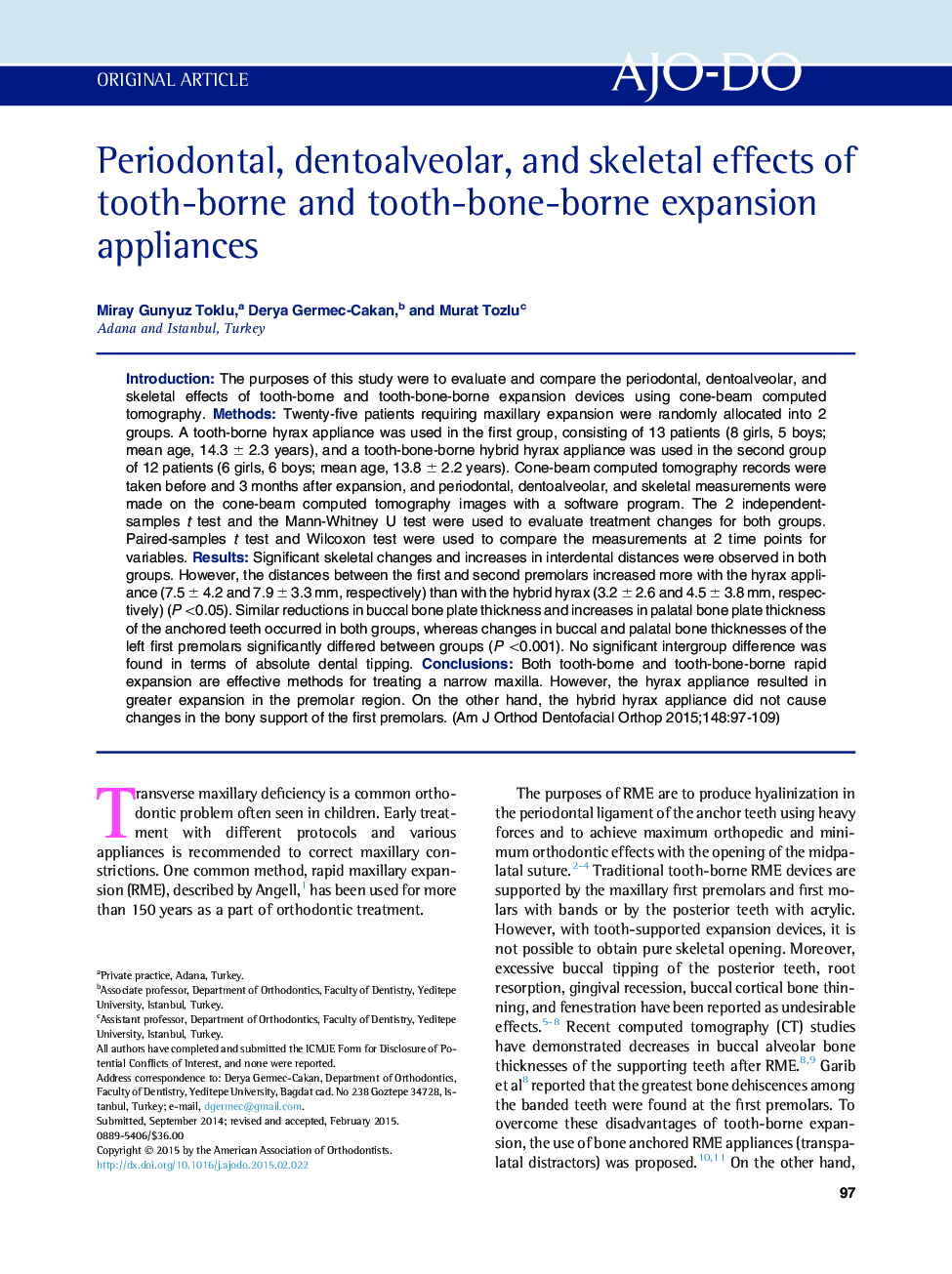| Article ID | Journal | Published Year | Pages | File Type |
|---|---|---|---|---|
| 3115340 | American Journal of Orthodontics and Dentofacial Orthopedics | 2015 | 13 Pages |
•The effects of tooth-borne and tooth-bone-borne expansion appliances were evaluated.•Both tooth-borne and tooth-bone-borne rapid expansion are effective methods.•The hyrax appliance results in greater expansion in the premolar region.•Both appliances reduce the buccal bone thickness.•The hybrid hyrax causes no periodontal changes for the first premolars.
IntroductionThe purposes of this study were to evaluate and compare the periodontal, dentoalveolar, and skeletal effects of tooth-borne and tooth-bone-borne expansion devices using cone-beam computed tomography.MethodsTwenty-five patients requiring maxillary expansion were randomly allocated into 2 groups. A tooth-borne hyrax appliance was used in the first group, consisting of 13 patients (8 girls, 5 boys; mean age, 14.3 ± 2.3 years), and a tooth-bone-borne hybrid hyrax appliance was used in the second group of 12 patients (6 girls, 6 boys; mean age, 13.8 ± 2.2 years). Cone-beam computed tomography records were taken before and 3 months after expansion, and periodontal, dentoalveolar, and skeletal measurements were made on the cone-beam computed tomography images with a software program. The 2 independent-samples t test and the Mann-Whitney U test were used to evaluate treatment changes for both groups. Paired-samples t test and Wilcoxon test were used to compare the measurements at 2 time points for variables.ResultsSignificant skeletal changes and increases in interdental distances were observed in both groups. However, the distances between the first and second premolars increased more with the hyrax appliance (7.5 ± 4.2 and 7.9 ± 3.3 mm, respectively) than with the hybrid hyrax (3.2 ± 2.6 and 4.5 ± 3.8 mm, respectively) (P <0.05). Similar reductions in buccal bone plate thickness and increases in palatal bone plate thickness of the anchored teeth occurred in both groups, whereas changes in buccal and palatal bone thicknesses of the left first premolars significantly differed between groups (P <0.001). No significant intergroup difference was found in terms of absolute dental tipping.ConclusionsBoth tooth-borne and tooth-bone-borne rapid expansion are effective methods for treating a narrow maxilla. However, the hyrax appliance resulted in greater expansion in the premolar region. On the other hand, the hybrid hyrax appliance did not cause changes in the bony support of the first premolars.
